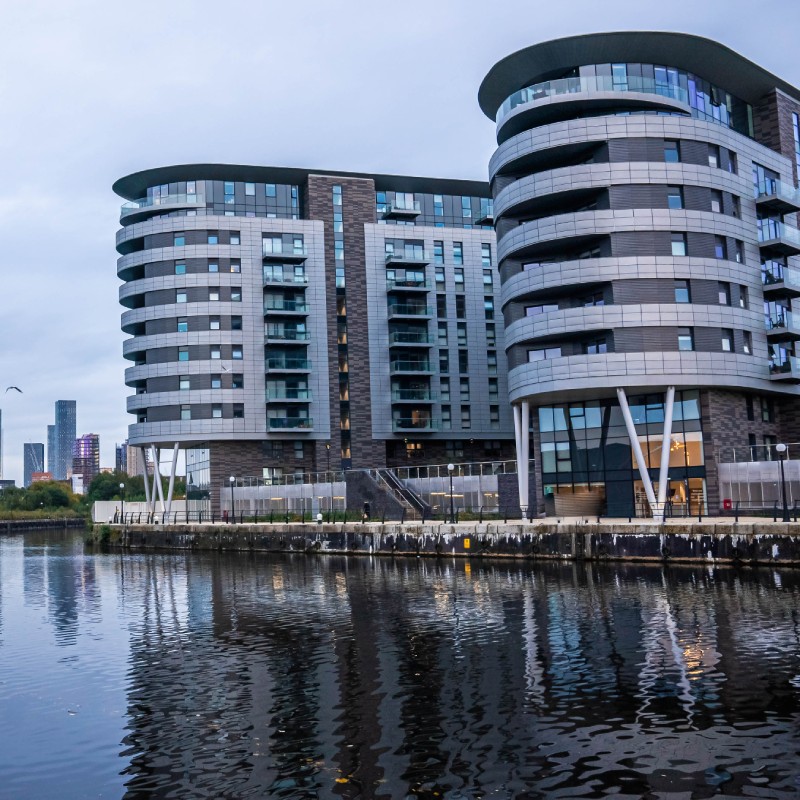Are you considering taking out a short-term bridging loan to help finance a property purchase or raise some funds?
If so, you’ll want to make sure you understand the ins and outs of these short term loans. In this guide, we will provide an overview of bridging loans and offer some tips on how to get the best deal.
So whether you’re a first-time buyer or an experienced investor, read on to learn more about bridging finance.
What is a bridging loan?
A bridging loan, or bridging finance, is a type of short-term financial loan that is designed to help individuals or businesses bridge the gap between one financial commitment and another.
These loans can be used for a wide range of purposes, such as bridging the funding gap needed to purchase a new home while also selling an existing property, or as temporary financing while waiting for other funds to come through.
Bridging loans are typically more expensive than traditional mortgages due to their short repayment terms and higher levels of risk, but they can be a valuable tool for businesses or individuals that need quick access to capital in order to fulfil their financial obligations.
They are always secured against a property and always set up over very short terms (3-24 months).
So if you find yourself in need of bridging finance for any reason, it’s important to understand all of your options so that you can make an informed decision about which type of loan works best for you.

What are the main uses of bridging loans?
There are several ways that bridging loans can be used.
One common application is to help finance a property purchase when there is a gap due to the property chain breaking down or being delayed. This type of bridging loan can help to facilitate a quick sale, as well as provide the buyer with access to needed capital.
Additionally, bridging loans can be used to refinance existing property investments, allowing investors to take advantage of market opportunities without having to sell their current assets.
Bridging loans may also be used by businesses that need fast funding for growth or expansion initiatives. Whether you are an individual looking to make a property purchase or a business looking for financing, bridging loans provide flexible and accessible funding solutions that can meet a wide range of needs.
Some uses could be:
- To purchase a new property before the sale of your old property has gone through
- To purchase a property at auction
- To release equity in your current property to use towards another property
- To cover the cost of buying a property before getting a mortgage agreed
- To cover the cost of refurbishing a property before sale
- As a short-term loan while you wait for your long-term mortgage to come through
- As a way to get money out quickly without having to go through a lengthy mortgage application process
A bridging loan can be used for almost any purpose. As long as you have a strong asset and plausible exit plan you should be OK.
How do bridging loans work?
Bridging loans are always short-term, usually taken out for 24 months or less. Interest rates on bridging loans are typically higher than on other types of finance, such as mortgages, and lenders will often charge upfront fees as well as interest.
The amount that can be borrowed through a bridging loan is based on the value of the property being purchased or refinanced. In some cases, however, lenders may also consider the value of other owned properties and these can be residential or commercial.
Once the lender has given you the money they do not generally expect any monthly repayments. Interest is rolled-up and paid at the end along with the main debt plus any fees due. This is very cash-flow friendly!
The lender will be interested in your exit-plan, the way you intend to repay them, here are some successful strategies for repaying a bridging loan.
CONTACT A MORTGAGE BROKER
If you are ready to take the next step then we can put you in touch with a fully qualified independent mortgage broker.
How much can you borrow?
The maximum loan to value is typically 75-80%. Bridging lenders are mostly interested in the property and your exit strategy when assessing an application.
However, lenders are willing to look at securing a loan across multiple properties (known as cross-collateralisation) which would allow you to fund 100% of a purchase.
Also known as a cross-charge, the lender places first and/or second charges against both properties.
Do you need a survey for a bridging loan?
Yes, a survey will be required and is organised by the lender.
If the LTV is quite low, 70% or below, the lender may choose to accept a desktop valuation instead of a physical visit.
What properties can bridging loans be used on?
Bridging loans can be used to finance a variety of property types, including homes, offices, buy to lets, HMO, commercial buildings, and land.
Bridging loans offer an attractive alternative to traditional financing options such as mortgages or bank loans. They allow borrowers to access funding quickly and easily.
Additionally, since lending criteria tends to be more flexible than with other mortgage types, many borrowers can obtain the funds they need within a short time.

One area that is particularly popular with investors is purchasing a leasehold property where the lease term is low. Most standard lenders are not interested but a short lease bridging loan will allow the purchase to be financed.
Ultimately, bridging loans can help speed up the buying and selling process for both buyers and sellers alike, making them a useful problem solver.
Can bridging finance be used on unmortgageable properties?
Yes, it can.
This type of financing is often used by investors who are looking to quickly buy and renovate properties to sell them at a profit. A planning gain bridging loan can be used to purchase land without planning permission, while awaiting the planning permission application outcome (with fingers crossed).
There are several reasons why a property might not be mortgageable, such as being uninhabitable due to poor condition or having gone into repossession.
Remember that a mainstream mortgage lender wants to lend against properties that can be occupied upon completion. At a basic level, this means that it must have running water, heating, a kitchen, and a bathroom.
However, with the help of bridging finance, investors can still take advantage of these opportunities.
Bridging finance is typically repaid within 12-24 months, so it is important to have a solid plan in place for how the property will be renovated and sold within this timeframe. This is your exit strategy and the lender will look carefully to ensure it is feasible, within the given timeframe.
If done correctly, bridging finance can be a great way to fund unmortgageable properties.

How long does a bridging loan take to arrange?
Not that long, and this is one of their main advantages.
The answer to How quickly can you get a bridging loan? depends on many factors, including the lender you choose and the amount of money you need to borrow.
However, most bridging loans can be arranged within a few weeks. If you are planning to buy a property at auction, for example, a traditional mortgage will normally take too long to set up.
Whereas a bridge loan is ready to go in 2-3 weeks, sometimes faster.
Eligibility criteria
Criteria is minimal, so as long as you can be credit checked successfully you’re good to go. The reason is that these loans are underwritten on the property more than the individual. So if your income is a bit unpredictable or you have the odd blemish on your credit file you should still be OK.
Borrowers can be individuals, limited companies, partnerships, trusts, and special purpose vehicles (SPV).
Can you get a bridging loan with bad credit?
Legal charges
All bridging lenders will understandably want their loans secured against a property, with an entry to this effect made with Land Registry.
If they are the only lender, as with an auction purchase, then this will be a first charge.
Where there is already a main mortgage in place, second charge bridging loans are available (and even third). This requires the consent of the main lender. If they don’t give this, then there are possible options by using a lender that can take an equitable charge over the property instead.
What is the period of time I have to pay the loan back?
The typical repayment period for a bridging loan is 12-24 months. This should give you plenty of time to refinance the loan with a longer-term mortgage or sell the property. Some lenders will allow you to extend the term if necessary but this may incur additional fees and is not guaranteed.
The Exit Strategy
After the actual property value, this is the second most important part of applying for bridge finance.
The exit strategy is simply how you plan to repay the loan, and it needs to be watertight. The two most common methods are either selling the property or refinancing with a longer-term mortgage.
Some lenders will only agree if they think your exit strategy is realistic, so it’s important to have this sorted in some detail before applying.
Repayment can also be from the sale of other assets such as property or investments.

Why is an exit strategy so important?
If you are unable to provide a clear repayment plan at application stage, this may indicate that you are likely to struggle with repaying your short term bridging loan in full by the end of its term. If this is the case, it is unlikely that your bridging lender will agree to lend you any money.
Your plan to repay the loan is one of the most important aspects of a bridging loan and all lenders will analyse it carefully.
Bridging finance is only for the short term so that does not leave enough time to save up the amount on a monthly basis. It needs to be paid off in one go so a larger plan is needed to generate the money over the short term.
It is important that the plan is realistic and fits the timeframe needed. Loans can be paid back early but lenders may charges fees or higher interest when loans are overdue.
What exit strategies are there?
There are quite a few different ways of exiting a bridge loan, such as selling the primary/investment property or refinancing to take on a longer-term mortgage. You could also sell other investments like shares, secondary properties or use an inheritance.
Whichever one is chosen, or maybe it’s a combination of a few, it needs to resonate with the lender so that they have a clear understanding of how it works.
Property sale
Refinancing
Sale of another property
Sale of investments
Exit finance
Sale of business
Pension lump sum
Inheritance
Regulated vs unregulated bridging loans
Secured loans and mortgages in the UK are classified by the Financial Conduct Authority (FCA) as either regulated or non-regulated.
Regulated loans are designed for people who intend to live in the property as their main home. One of the most common reasons would be to break the property chain when buying and selling homes. For regulated loans, the maximum term is normally 12 months.
For regulated loans, most lenders will not require any monthly payments. Loan interest is added to the mortgage balance each month and is repayable at the end of the agreed term, along with the initial sum borrowed.
Unregulated loans are for property investors, developers, or commercial purposes where the security is not linked to your place of residence.
The following article covers this in more detail: Are bridging loans regulated by the FCA?
Not on the High Street!
The high street lenders can’t help every mortgage customer and they prefer the simple, low-risk ones.
If your situation is a bit different or needs a more personalised solution then our brokers can help.
Expert advice, for all situations.
Bridging Loans
The most flexible of secured loans and often misunderstood. Bridge loans can be used in so many different ways and can be arranged super fast.
Large Loans
High net worth mortgage brokers understand complex large loans and unique situations and can source bespoke deals from the right lenders.
Let to Buy
Let to buy combines a buy to let remortgage with a residential mortgage. Allowing you to move house while keeping your current home.
Open and closed bridging loans
A closed bridging loan is where you know exactly how and when you will repay the loan. For example, if you have exchanged contracts to sell your current property and the sale completes in 6 months, you would take out a 6-month closed bridging loan.
When you apply the lender will ask about your exit strategy and timeframe. This is where the money will come from and when. For some people it is possible to know exactly when the money will arrive. This could be because of an agreed completion date on a property sale or the maturity of an investment.
An open bridging loan is where you do not have a definite timing for the repayment. This could be because you are waiting for planning permission to be granted on a redevelopment project, for example.
Open loans usually have a maximum term of 24 months but this can vary from lender to lender.
Generally the maximum possible loan will be 75% loan to value (LTV) of the current value. This means that finance can be arranged for almost any property type or condition including run down and uninhabitable properties.
The main advantage of a closed loan is that the interest rate is usually lower than for an open loan. The disadvantage is that if your plans change and you are unable to repay the loan as agreed, you may have to pay fees.
The main advantage of an open bridging loan is that it gives you more flexibility. The disadvantage is that the interest rate is usually higher.
Auction Properties
Buying a property at an auction is simple and fast.
There’s no property chain and no gazumping, if you are the highest bidder then you get to buy the property.
The biggest advantage of auction finance is that it’s quick and easy to arrange.
If you’re planning to buy a property at auction then you will need to have your finance in place before the day of the sale. Auction finance is a type of bridging loan and can be either regulated or non-regulated, depending on the purpose of the loan.

Auction finance is typically for a short-term period of 6 months to 1 year but some lenders will offer terms of up to 2 years. Importantly, you can borrow against properties that are in a poor condition and/or are without a kitchen and bathroom.
Pretty much any residential, commercial, semi-commercial or mixed-use property can be bought with auction finance.
Bridging lenders are specialists and will consider many properties that a regular high street lender refuses as unmortgageable, including non-standard construction and ones requiring major refurbishment works, including underpinning due to subsidence.
VAT Bridging Loans
Commercial loans and mortgages are used to fund the purchase of a commercial property. The maximum loan to value available would be somewhere around 60-70% of the purchase price, excluding VAT.
As the loan used to purchase the property doesn’t include any of the VAT element, there is a large funding gap that needs to be covered.
The bridging lender will set up a short-term loan that can pay the VAT costs, fixing the funding gap and reducing the cash-flow burden on the business.

What are the risks of taking out a bridging loan?
As with any type of loan, there are some risks associated with taking out a bridging loan.
The main risk is that you may not be able to repay the loan in full within the agreed timeframe. If this happens, you could lose your asset (if it was used as collateral for the loan) and damage your credit rating. If this looks likely contact your lender and ask for a term extension.
Depending on your situation it may be possible to remortgage the bridge to a new lender, this is a re-bridge.
It’s important to remember that bridging loans are typically more expensive than other types of finance, so you’ll need to make sure that the benefits of taking out a loan outweigh the costs.
Do I need to use a mortgage broker?
You don’t need to use a broker but we suggest that you do.
Bridging finance is very different to regular mortgages and lots of the lenders are not well known names and do not have a high street presence.
By using an independent mortgage broker you will gain access to these specialist lenders, who often only accept business from brokers anyway. Your brokers expertise will allow you to get a loan at the best terms and with a provider that can deliver on the timescale you have.
They will help to present your case in the best way and can also look at the exit strategy if your aim is to exit by way of a long term mortgage. Yes, you will have to pay a broker fee but for this you will receive a tremendous amount of benefits and advantages in return.

FAQ
Frequently Asked Questions
Will I need a solicitor?
Yes you will need a solicitor. They should be familiar with the type of bridging loan you need.
Do you need a deposit for a bridging loan?
Lenders will only go to 75% LTV so you need to cover the rest. This could be by raising funds against another property.
Can a mortgage pay off a bridging loan?
Yes, using a long term mortgage is a popular way to exit a bridge.
Can you get 100% bridging finance?
Not with only one property. But it may be possible if you own other properties that have enough equity.
Do you pay a bridging loan back monthly
No. The lender does not require any monthly payments. The loan plus interest is paid back at the end.
How quickly can you get a bridging loan?
Bridging loans are known to be fast. You could have the money in 4-6 weeks.


